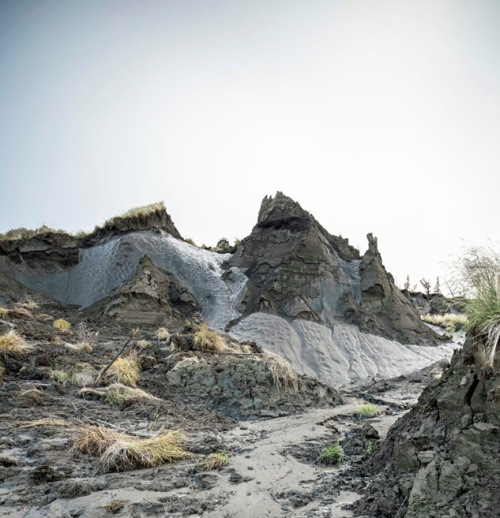Skidaway Institute was well represented at the 2017 Association for the Sciences of Limnology and Oceanography Aquatic Sciences Meeting in Honolulu, Hawaii, February 26 – March 3.
Aron Stubbins and Sasha Wagner chaired a two-day session titled “The Biogeochemistry of Dissolved Organic Matter.”
Sasha presented her research on “Stable Carbon Isotopes Offer New Insight into the Biogeochemical Cycling of Black Carbon.” Aron, Jay Brandes and A. Ramapo Goranov, from the College of New Jersey were co-authors.
Former Skidaway Institute intern (Stubbins Lab) Camisha Few presented a poster “Photodegradation of Dissolved Organic Carbon Within the Connecticut River Watershed.” Camisha is a student at Florida A&M University. Her co-authors included Aron, Sasha, Kevin Ryan and K. Haiat-Sasson from the University of Rhode Island.
Aron presented his work on “Tree-Dom: DOM from the Crowning Headwaters of the Aquatic Carbon Cycle.” His co-authors included Sasha, T. Dittmar from the University of Oldenburg, Germany, and J.T. Van Stan from Georgia Southern University.
Thais Bittar presented “Growth, Grazing and Virus-Induced Mortality of Bacterioplankton in the Sargasso Sea.” Her co-authors included Karrie Bulski, Elizabeth Harvey, R. Parsons from the Bermuda Institute of Ocean Sciences, S. Giovannoni from Oregon State University and C. Carlson from UC-Santa Barbara.
Cliff Buck and Chris Marsay also made presentations. Cliff chaired a session on atmospheric deposition, “Linking atmospheric deposition to the biogeochemistry of aquatic and marine systems.” His co-organizer was Rachel Shelley from LEMAR-Universite de Bretagne Occidentale, France.
Both Cliff and Chris gave talks about data from the Arctic cruise in a session titled “Biogeochemical Cycling Trace Elements and Isotopes in the Arctic Ocean.” Cliff’s talk was on the aerosol data and titled “Aerosol Concentration, Composition and Fractional Solubility on the US Geotraces Western Arctic Cruise.” In addition to Chris, his co-authors included A. Ebling, P. Morton, B Summers and W. Landing, all from Florida State University. Chris presented melt pond data, “Dissolved and Particulate Trace Elements in Arctic Melt Ponds.” In addition to Cliff, his co-authors included P. Morton, B Summers and W. Landing, all from Florida State University, and S. Rauschenberg and B.S. Twining, both from the Bigelow Laboratory for Ocean Sciences.



